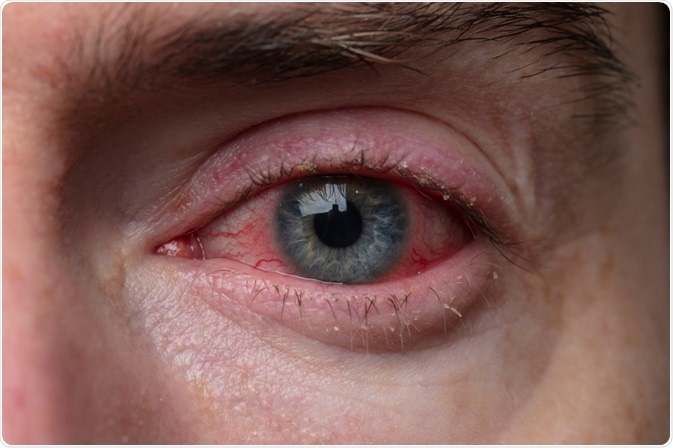The human skin surface is known to house millions of bacteria, though some people have more than the average number.
Blepharitis is a bacterial infection that causes inflammation of the eyelids. The bacteria responsible for this infection produce dandruff-like flakes in the skin, which lead to infection and inflammation of the affected area. Problems with the meibomian oil gland, a condition known as meibomianitis, in the eyelids can also cause blepharitis.
The development of inflammation is also associated with risk factors such as dandruff, dry eyes, acne rosacea, or bacteria. Blepharitis is a common eye disorder affecting all age groups.
Treating blepharitis
Diagnosing blepharitis
People with blepharitis have symptoms of redness, itchiness, and irritation of eyelids, which are uncomfortable and difficult to manage. In diagnosing this condition, ophthalmologists, who are medical specialists who performs surgery for eye problems, as well as optometrists, who are specialists in diagnosing and treating eye conditions, have specific and important roles to play.
The two different approaches for diagnosing blepharitis are physical examination and comprehensive eye examination.
Physical Examination
A physical examination is done by close monitoring of the eyelids and eyelashes by the optometrist or the ophthalmologist. The optometrist evaluates the eye using a slit-lamp microscope or specialized instruments such as a magnifying tool. This tool checks for inflammation in the eye and the presence of bacteria/fungi/viruses.
During the physical exam, the treating clinician will also test the pressure in the eyes, which is an examination known as tonometry. If signs of infection are found during this examination, the ophthalmologist wipes the eye and collects any fluid oozing from the eyes as a sample. This sample is tested under a microscope.
Comprehensive eye examinations
A comprehensive eye examination test helps in the detection of blepharitis, which can be performed on the outer surface of the eyeball and eyelids. This process includes:
- Analyzing the patient history that could contribute to blepharitis
- Extrinsic detection of the eye structure, skin texture, and appearance of eyelashes
- Examining the openings of the meibomian gland, base of the eyelashes, and eyelid margins using a bright light
- Checking for abnormalities by evaluating the quantity and quality of tears

Image Credit: Ink Drop / Shutterstock.com
The type of blepharitis can be determined based on the appearance of the eyelid edges. If the symptoms frequently exhibited by the patients are mild sticking eyelids, thickened lid margins, and missing/misdirected eyelashes, then the type of blepharitis is said to be Staphylococcal. If the patients show mild redness of the eyelids or scales around the base of eyelashes, Seborrheic blepharitis will likely be the diagnosis. When the patient is found with blockage of the oil glands in the eyelids, poor quality of tears, and redness of the lining of the eyelids, the type is Meibomian blepharitis.
If a hard, matted crust is formed on the eyelashes and, while removing these, some small sores are formed on the eyelashes that ooze and bleed, the condition is likely ulcerative blepharitis. In this case, patients may experience distortion of the front edges of the eyelids, loss of eyelashes, and chronic tearing. In severe cases, the transparent outer portion of the eye that covers the eyeball, which is known as the cornea, is inflamed.
Treating blepharitis
Blepharitis is comparatively a long-standing condition and can be treated by the following methods which can be done in the home:
- Routine cleaning of eyelids once or twice a day and keep it without the crust.
- Apply warm compresses on the eyelid that can loosen the crust, bacteria, dust, and grime, and reduce inflammation.
- Push out excessive oil accumulated in the gland by lightly massaging the eyelids.
- Dilute some baby shampoo in warm water and apply it to the eyelids. Gently scour the eyelids using a cotton swab for about 15 sec or soak a cotton ball in the shampoo mixture and cautiously apply it on the eyelashes. Finally, wash the eyelids and eyelashes using warm water.
- When dandruff is present in the scalp, it is recommended to use anti-dandruff shampoo or anti-bacterial shampoo to wash the hair and scalp.
The ophthalmologist will often prescribe artificial tears and steroid or antibiotic eyedrops. A small amount of lubricating or antibiotic ointment or eyedrops is gently applied on the base of the eyelashes with clean fingers before bedtime. The solution is then rinsed with water to avoid irritation caused by dry eyes, to reduce redness and swelling, and clogging of the oil glands.
If the case is severe, antibiotics or steroids can be taken orally in the form of tablets. In some patients, chalazia, which refers to the presence of cysts in the eyelid, are formed due to the accumulation of oily secretions. In such cases, surgery is required.
To control the growth of bacteria on the skin, antiseptic sprays are also prescribed.
Reducing or stopping eye makeup also helps during treatment. Commercial eyelid scrubs or medicated pads can be used for removing eye makeup to maintain the hygiene of the eyelid. Temporarily abstaining from the use of contact lenses is preferred while taking treatment.
References
Further Reading